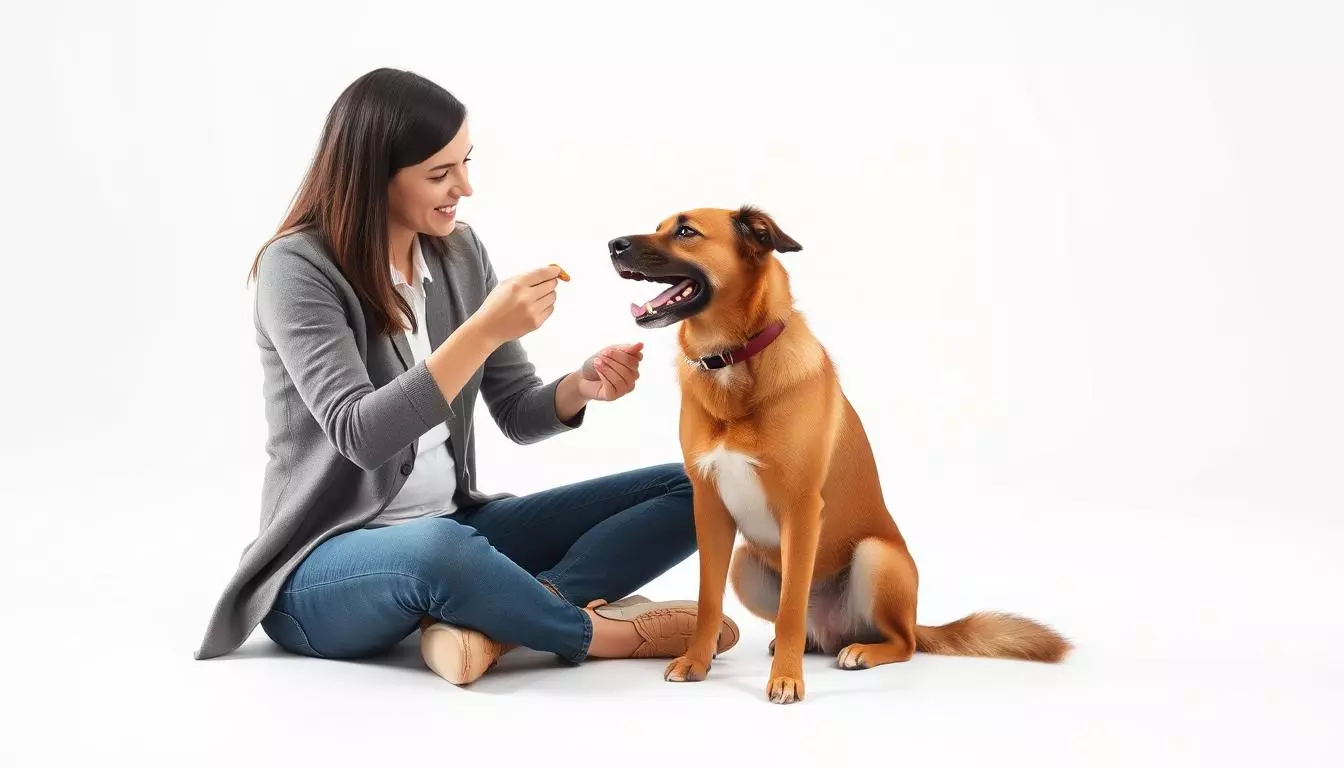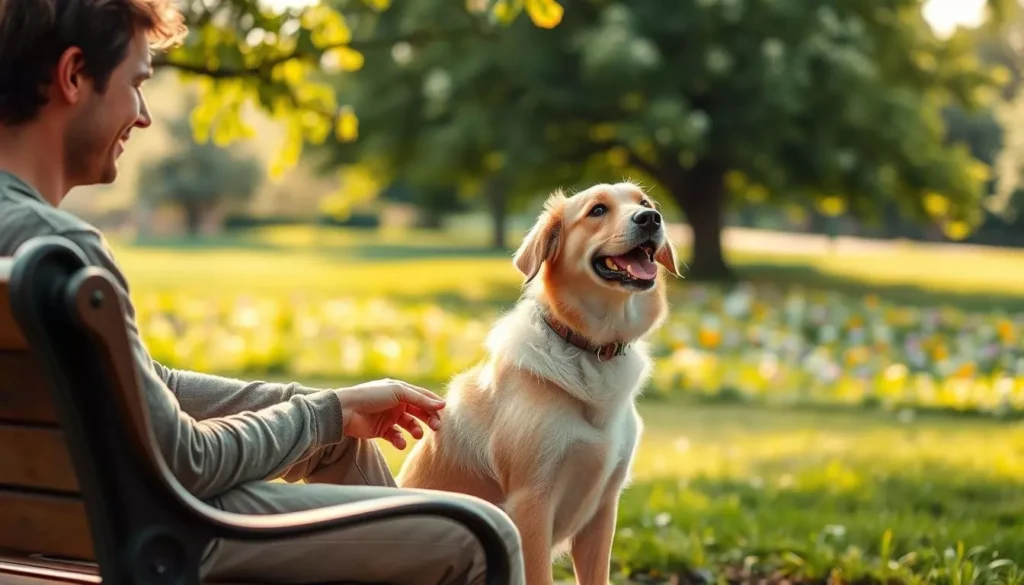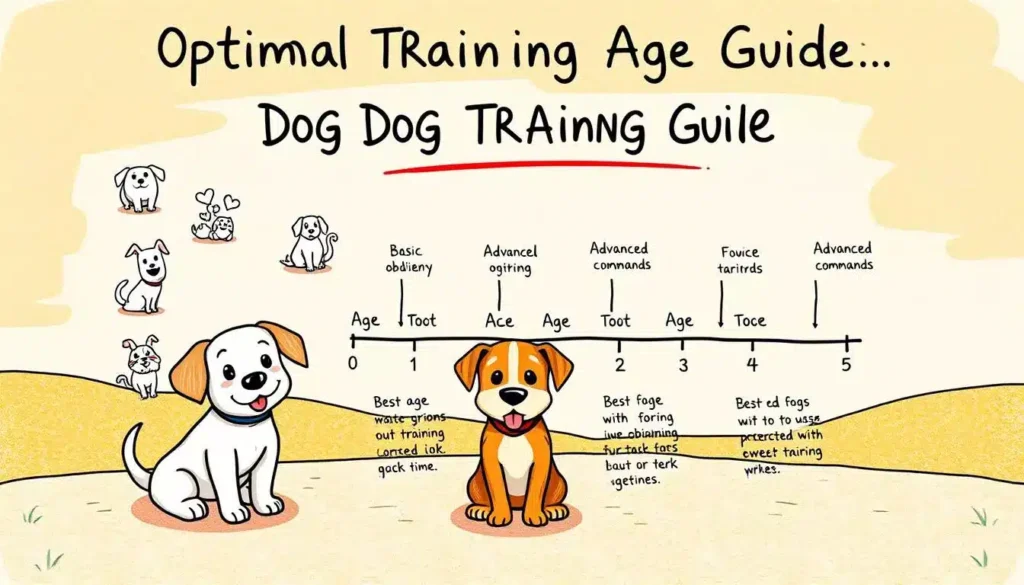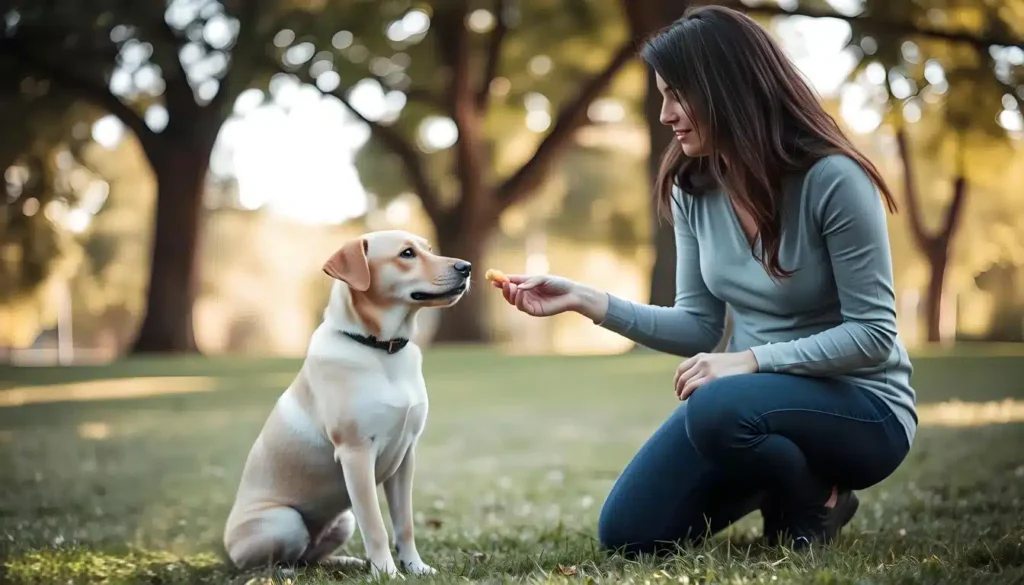As a dog owner, it's really frustrating when my furry friend won't pee outside. I often wonder, "why won't my dog go potty outside?" It's puzzling, especially since I want them to feel safe and comfortable when they need to go.
This situation causes stress for both of us. When a dog won't pee outside, it can harm their health. It also means I have to deal with accidents inside. So, figuring out why my dog won't pee outside is key to their health and my sanity.
We'll look into why dogs might not want to pee outside. This will help us make potty time better for our pets.
Key Takeaways
- Many dog owners experience their pets refusing to pee outside.
- This behavior can lead to health issues and indoor accidents.
- Understanding the reasons behind this reluctance is crucial for dog well-being.
- Factors include medical, behavioral, and environmental elements.
- Addressing this issue helps ensure both the dog's comfort and the owner's peace of mind.
Understanding Why Your Dog Refuses to Pee Outside
As a dog owner, I've often wondered why does my dog refuse to go potty outside. It's important to know why dogs don't pee outside. Many things can cause this, like health issues or behavioral problems.
Medical issues, like urinary tract infections, can hurt when a dog tries to pee. If my puppy won't pee outside, it might mean they're sick. This could need a vet's help.
Behavioral issues, like anxiety, can also be a problem. Some dogs feel scared outside and won't pee. Not being well-trained can make them unsure about peeing outside. It's key to understand these issues to help my dog.
By understanding these reasons, I can help my dog better. This makes a big difference in their life.
Medical Issues That May Affect Your Dog's Urination
When my dog has trouble peeing outside, I worry about health problems. Issues like urinary tract infections and bladder stones can make it hard for them to go. These problems cause discomfort and make them hesitant to go outside.
Urinary Tract Infections
Urinary tract infections (UTIs) are a big worry. They can be very painful, making my dog dread going outside. Signs include trying to pee a lot, straining, or seeing blood in the urine.
Spotting these signs early is key. Quick vet care can help ease the pain and make going outside better for them.
Bladder Stones and Other Health Concerns
Bladder stones are another serious problem. They can hurt, irritate, and even block the flow of pee. Other issues like tumors or inflammation can also be a problem.
If my dog starts avoiding the outdoors, it's time to check for these issues. A vet visit is crucial to find and treat the cause.
Behavioral Reasons Behind Your Dog's Reluctance
Understanding why your dog might not pee outside is key for pet owners. Many things can cause this problem, like anxiety and not enough training. Knowing these reasons helps us find ways to help our dogs feel more comfortable going outside.
Anxiety and Fear
Anxiety is a big reason dogs might not pee outside. They might be scared of loud noises, new people, or other animals. These things can make them too nervous to go outside.
If your dog seems nervous or slow to go outside, they might be scared. Creating a calm, safe space can help them feel better. This way, they'll be more likely to go potty outside.
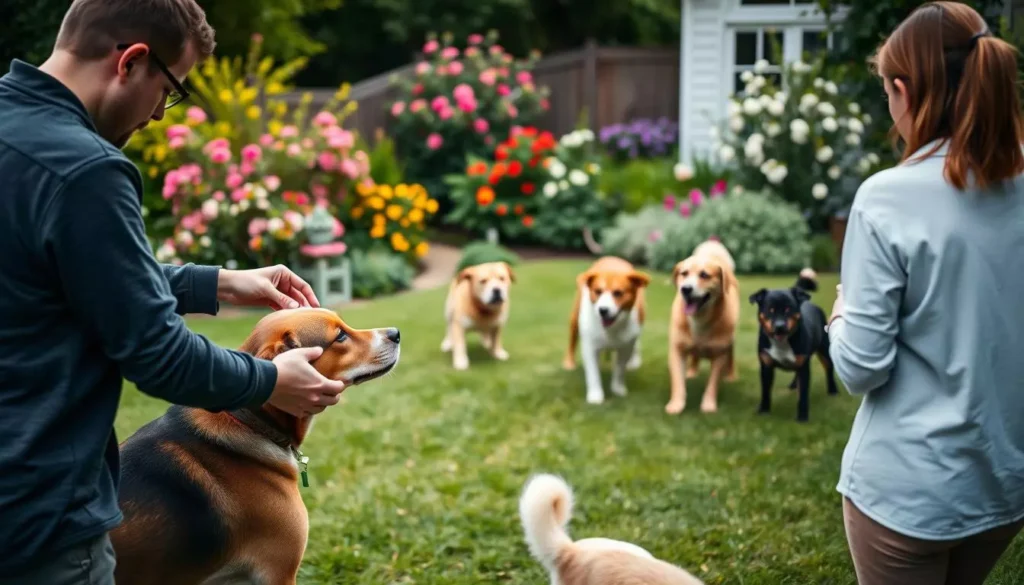
Lack of Proper Training
Not being trained is another big issue. Dogs, especially those from shelters or without a routine, might not know what to do outside. Teaching them with positive rewards can help a lot.
With time and effort, your dog can learn to go potty outside. They'll start to see it as a normal part of going outside.
Environmental Factors Impacting Your Dog's Potty Habits
Understanding how the environment affects your dog's potty habits can make their outdoor time better. Many things can influence their behavior, like new places and weather. Both can make them less likely to pee outside.
Unfamiliar Surroundings
Dogs love routine and knowing their surroundings. When they're in new places, they might feel scared or lost. This can make them not want to pee in new spots.
I've seen my dog be hesitant to go in places without familiar smells or sights. Knowing this helps me make him feel more at ease.
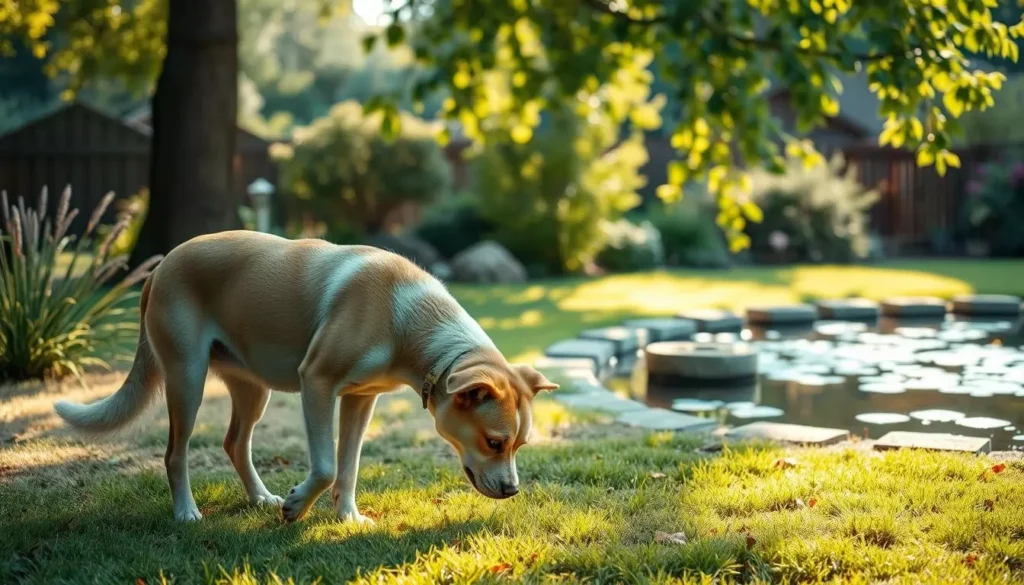
Weather Conditions
Weather can also play a big role in a dog's potty habits. Extreme weather, like very hot or cold, or lots of rain, can keep them inside. My dog doesn't like going out when it's bad outside.
Having a cozy spot and treats when it's bad weather helps him feel better about staying inside.
Signs Your Dog Is Struggling to Pee Outside
Knowing the signs of dog struggling to pee outside is key to understanding their needs. When I see my dog acting differently during potty time, I watch closely. Signs include frequent indoor accidents, showing something is off.
My dog might seem restless or anxious when taken outside. This could be due to many reasons, like environmental issues or health problems.
Another clear sign is when my dog refuses to go outside for potty breaks. If he hesitates at the door or turns away, it's a big warning. It's crucial to notice these indications of indoor accidents to help my dog.
Creating a Positive Outdoor Experience for Potty Time
I want my dog to have great outdoor experiences, especially when it's time to go potty. A welcoming spot can really help. I make sure the potty area is comfortable and relaxing for my dog.
Using treats and praise when my dog goes outside is a great way to reward them. This makes going outside a fun thing to do. Afterward, I play with them gently to keep the good vibes going.
It's also important to pick the right spots for potty breaks. I choose places that are easy to find and feel like home to my dog. This makes them more likely to go outside when they need to.
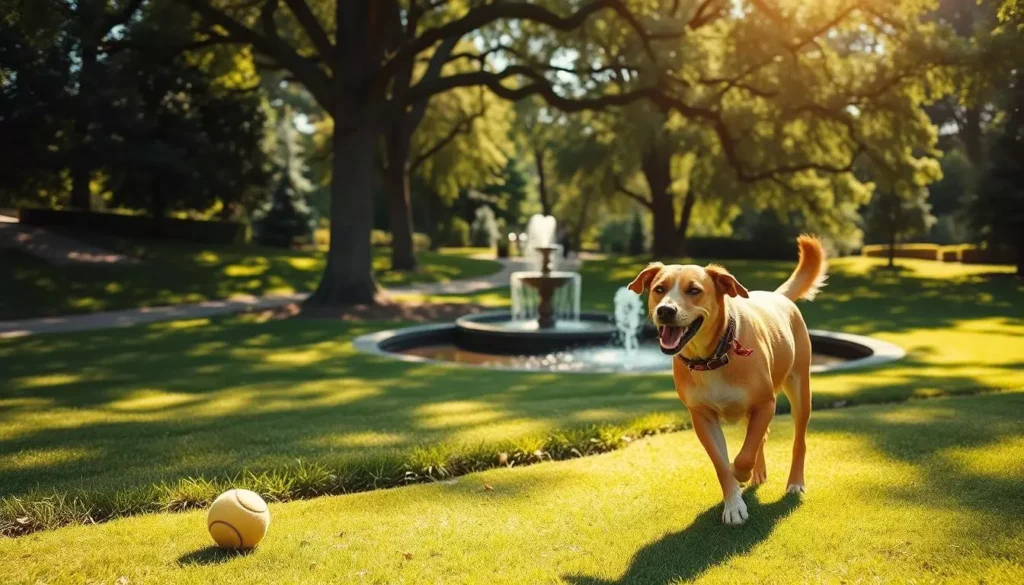
Step-by-Step Guide to Encourage Your Dog to Pee Outside
Getting my dog to pee outside can sometimes feel like a challenge. But, a structured approach has been effective. A consistent potty routine and positive reinforcement have made a big difference.
Establishing a Consistent Potty Routine
A regular potty schedule is key. I take my dog out at specific times, like after meals or naps. This predictability helps my dog learn when to go outside.
Over time, my dog learns to expect potty breaks. This leads to fewer accidents indoors.
Using Positive Reinforcement Techniques
Positive reinforcement is crucial. Whenever my dog pees outside, I praise him and give a treat. This reward makes going outside a positive experience.
Troubleshooting Scenarios When Your Dog Refuses to Pee Outside
Dealing with a dog that won't pee outside can be tough. Many pet owners face the issue of their dog peeing inside but not outside. This problem makes us worry about training and behavior.
Understanding these situations helps us solve them patiently and effectively. It's all about finding the right approach.
My Dog Won't Pee Outside But Will Inside
When my dog prefers to pee indoors, I look into the reasons. Factors like inconsistent training and anxiety might be the cause. To fix this, I stick to a regular potty schedule and use positive rewards.
Reducing indoor accidents is crucial. With time and effort, I can make my dog more comfortable with outdoor potty breaks.
Fitting Rainy Weather Potty Time into Your Routine
Rainy weather makes potty breaks outside a challenge. My dog might not want to go out in the rain, leading to accidents inside. To overcome this, I use rain gear and treats to motivate my dog.
Keeping the potty routine consistent, even in bad weather, is important. It shows my dog that going outside is necessary. Teaching my dog to go outside, even when it's raining, is key to successful potty training.
Why Your Dog Refuses to Pee Outside When It's Raining
Many pet owners ask, "why won't my dog pee in the rain?" Rainy weather can be tough for dogs. It triggers stress that makes them not want to go outside. Dogs might feel uncomfortable when wet or get anxious from thunder and lightning.
Understanding these stressors can help owners solve the problem. It's important to know what makes your dog uncomfortable during rain.
Identifying Stressors During Rainy Days
Being wet can make dogs anxious. This discomfort might make them stay inside. Some dogs also fear thunderstorms or lightning.
To help your dog, try using protective gear like raincoats or boots. Gradually getting them used to rain can help. Letting them explore wet conditions safely can reduce their anxiety. This approach helps them pee outside during rain and makes them more comfortable with it.
How Long Should You Wait Outside for Your Dog to Pee?
Patience is key when waiting for your dog to pee. I often wonder how long I should wait for dog potty breaks. Experts say 5 to 15 minutes is a good range. This gives dogs enough time to go without stressing us out.
Several things affect how long a dog needs to pee. These include their age, health, and past habits. Puppies need shorter breaks, while older dogs might take longer. If my dog hasn't gone after 15 minutes, I bring them inside.
When to Seek Professional Help for Potty Training Issues
As a pet owner, I know how tough potty training can be. Sometimes, it's clear we need help. If your dog suddenly stops going outside or has accidents in the house, it's a sign of a problem.
Medical issues can also affect a dog's potty habits. If you think your dog's health might be the cause, see a vet. Persistent accidents could mean there's more going on than just training issues.
Severe anxiety or fear about going outside can also be a reason to seek help. These problems can be tough for both pets and owners. Getting professional help can make a big difference in our lives and our dog's comfort.
Conclusion
Understanding why a dog won't pee outside is key for pet owners. This article has covered medical, behavioral, and environmental factors. It shows the value of being patient and persistent.
Fixing dog potty issues takes time, but it's doable. Positive reinforcement and a regular routine help a lot. It's more than training; it's making outdoor potty time good for both of us.
With the right methods, most dogs can learn to go outside. Let's tackle this challenge with love and a commitment to our pets' well-being.

